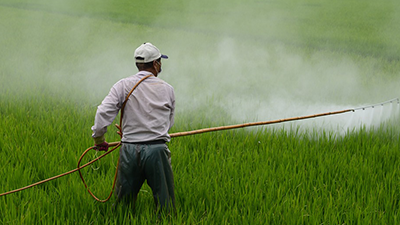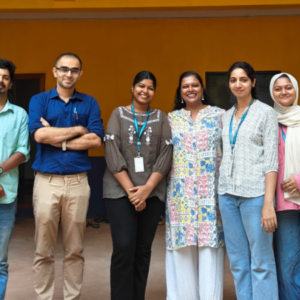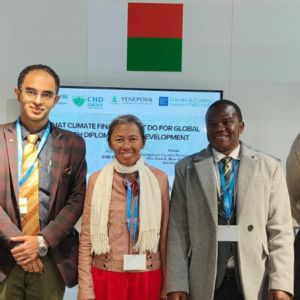The contribution of the agriculture sector in India is vast, for which it is called the backbone of the Indian economy. In India, the majority of the population lives in rural areas, which cover 68.85% of the region, and the other 31.15% live in urban areas (census of India). The total number of workers working in agriculture is 26,31,42,470, which is a huge number (Ministry of Farmers and Agricultural Welfare Report 2022). Thus, agriculture is an employment generator as well as providing output, which helps boost the economic stability of a country. There are various measures taken by the government to encourage farming and the livelihood of people. Science and development have modified the method of farming in efficient ways to get the maximum yield with the minimum input. In rural areas, where agriculture is the primary source of livelihood for many, the economic well-being of the community often relies heavily on agricultural activities. Farmers depend on their crops for income and sustenance. The use of pesticides directly affects their ability to maintain a successful farming operation by protecting crops from pests and diseases. Crop loss due to pest infestations can lead to financial instability and poverty among rural people. According to food and agricultural organizations, pesticides are defined as any substance that has the potency to destroy, prevent, and control pests, as well as the vectors causing diseases in animals or interference in the production, processing, storage, manufacturing, marketing, agricultural commodities, animal food stuff, and wood and wood products, such that the administration of that product to animals will be effective in getting rid of pests. The pesticides are classified based on their hazard nature depending on toxicity and exposure. The chemical exposure could be from eye, inhalation, oral, or dermal, routes through which it enters the body. The percentage and period of exposure to pesticide use have an impact on health and the environment. The level of pesticide hazard is measured on lethal dose 50 (LD50) or lethal concentration (LC50), which means the 50% population is killed due to the properties of that pesticide which add threat to people and environment. According to the Work Bank report, it is estimated that in 2022–23, the total pesticide used was 46,782 metric tonnes (M.T.) in India (Ministry of Farmers and Agricultural Welfare). India stands 12th globally and 3rd in Asia for the consumption of pesticides.

There are more than 1000 pesticides that are potent to cause health issues depending on their constituents there are; similarly, their health effects are seen among farmers, labourers working in the field, people around them, and also consumers consuming the products. The harmful use of pesticides may pose a threat to people through their potent ability to develop complicated issues. The harmful effects could be acute illnesses such as irritation, itching, burning, rash, nausea, abdominal cramps, diarrhoea, dizziness, anxiety, and confusion, and chronic illnesses such as cancer, birth defects, reproductive harm, immunotoxicity, neurological and developmental toxicity, and disruption of the endocrine system.
Farmers are the primary group who are subjected to pesticide harm. The government had implemented a strict guideline for using fertilizers for crops. This will prevent the use of excessive fertilizers on crops and also prevent harm to the environment and farmers. The use of pesticides is mainly to protect crops from pests and insects; thus, excessive usage will be a threat at every point. Some of the common pesticides used in agriculture are insecticides, herbicides, rodenticides, bactericides, fungicides, and larvicides. Pesticides have their contribution in getting good yields, but due to their improper usage, they have added huge negative effects to the environment as well as to health.
What are the problems caused due to pesticides?
1. Improper mixing, dosing or timing of pesticides: The improper ratio, difference in concentration and uneven timing will make the effect of pesticides difference. The incidence of Vietnam, where the pesticides used years before is comparably low as now which is 50 times that of years back for pests planthoppers which was feeding on rice plants.
2. Even with proper use: The usage of biotechnology in finding a potent pest resistant crop will further increase the use of chemical substance fit to that crop which further increase the concentration.
3. Unsafe handling condition: The usage of chemicals without protective equipment will bring health hazard to farmers as well as to consumers.
4. The use of highly toxic or persistent chemicals: The usage of chemical which will leave high impact due to their concentration and also the continuous usage of these chemical will leave poor invigilance to track their outcome, thus provide no monitoring data.
5. Reaching groundwater: The excessive usage of pesticides would also reach groundwater thus contaminates the water.
6. Pesticide spray: The food which we consume such as fruits, vegetables etc. is consist of spared chemical which add threat to health if not washed and consumed.
7. Loss of natural microbiomes: Due to excessive usage of pesticide the microbes are killed causing threat to natural microbes and prevent natural pollination.
8. Soil fertility: the land fertility is lost due to excessive use of pesticide
These are the threat caused by pesticides which could be recovered by wise methods some of them include
1. Integrated pest management (IPM): It uses natural pest control mechanism and synthetic method which is less harmful and cost effective
2. Information, awareness, norm change, and technology: The updates of each and every technique which could be applied are described to every farmer in order to adapt an effective technique of farming
3. Market incentives: The profitability with market price to farmers by using alternative pesticides which are not harmful.
4. Bans, standards, enforcement, and monitoring: The right awareness about ban or restriction and safety standards will educate people.
6. Using protective equipment: The usage of protective equipment plays a major role in preventing contact with pesticide
Thus, the usage of science and technology and research provide various alternative methods, such as integrated pest management, hydroponics, irrigation, and many others, which could be taught to farmers through education and awareness programs in collaboration with private sectors that work for agricultural-related firms. The collaboration will teach farmers to adapt to modern farming techniques and thereby help in effective farming practices with high yield productivity and less pesticide usage. Thereby, the health impact of pesticides could leave no traces among people.
About the Author: Jencil D Souza is Lecturer and Research Officer at Edward & Cynthia Institute of Public Health ( ECIPH)
Disclaimer: Views expressed are the author’s own. Edward & Cynthia Institute of Public Health or Yenepoya (Deemed to be University) are not responsible for contents or opinions reflected in this article.

Jencil D Souza
Jencil D Souza is Lecturer and Research Officer at Edward & Cynthia Institute of Public Health ( ECIPH)
-
Jencil D Souza#molongui-disabled-link
-
Jencil D Souza#molongui-disabled-link
-
Jencil D Souza#molongui-disabled-link




